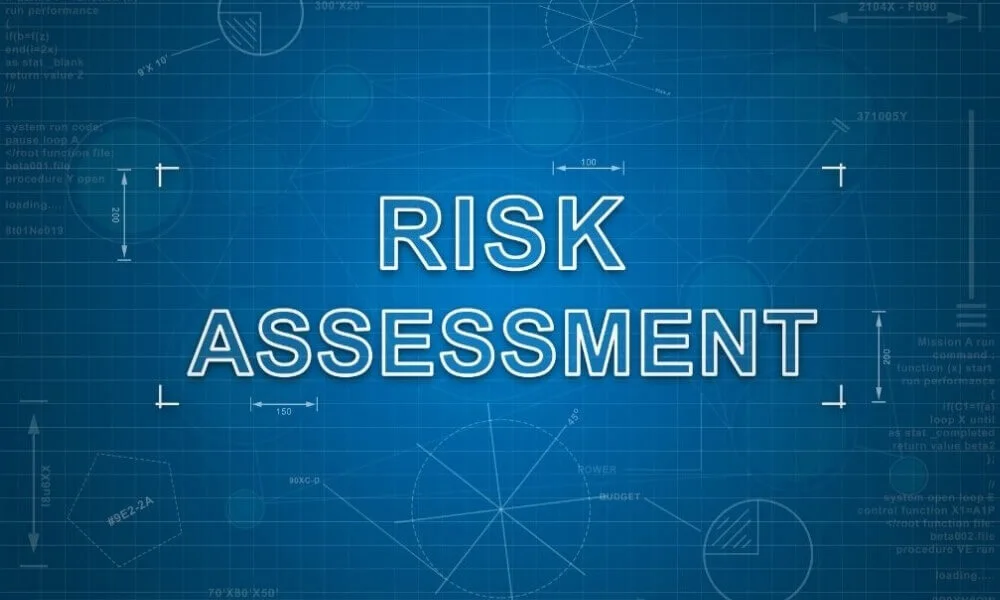Risk assessment is a critical process that helps identify potential hazards and assess the associated risks in various settings such as workplaces, homes, and public spaces. It is vital for preventing accidents, injuries, and illnesses and ensuring individuals’ and communities’ safety and well-being. However, who should be responsible for carrying out risk assessments is a question that requires careful consideration.
In this blog, we will explore the parties responsible for conducting risk assessments and examine the factors that should be considered when determining who should carry out these assessments. We will discuss the roles and responsibilities of employers, employees, health and safety professionals, and regulatory authorities in conducting risk assessments and provide guidance on ensuring that risk assessments are conducted effectively and efficiently. By the end of this blog, readers will better understand the importance of risk assessment and who should be responsible for carrying it out.
Who Should Carry Out Risk Assessment
The responsibility of carrying out a risk assessment can be daunting, so knowing who should take on this task is important. Many people wonder whether the responsibility should fall on the shoulders of the business owner or the employees. This blog post will discuss who should carry out the risk assessment and what factors to consider when making this decision.
- The first factor you need to consider is the size of your business. If you have a small business with only a few employees, the business owner will likely carry out the risk assessment. However, if you have a larger business with multiple departments and hundreds of employees, it is unrealistic for the business owner to do the risk assessment alone. In this case, it is best to delegate the responsibility to a team of employees.
- Another factor you need to consider is the type of business you have. If you have a high-risk business, such as a construction company, the risk assessment must be carried out by a professional with experience in this field. On the other hand, if you have a low-risk business, such as an office environment, the risk assessment can be carried out by any staff member.
- Finally, you need to consider the resources you have available. Hiring a professional to carry out the risk assessment is unrealistic if you have a limited budget. In this case, it is best to delegate the responsibility to a team of employees.
- When deciding who to carry out the risk assessment, you need to consider the size of your business, the type of business you have, and the available resources. If you take all of these factors into account, you will be able to make the best decision for your business.

Under section 19 of the 2005 Act, the employer must carry out the risk assessment, so you should try to do it yourself while involving managers and employees as much as possible. Where the in-house expertise is not available, employ the services of an externally competent person to help. Check that they are familiar with and can assess specific work activities. Involve as many employees as possible to encourage them to share ownership of the finished assessments.
Who Is Responsible For Risk Assessments
The responsibility for risk assessments can vary depending on the situation and the organization involved. In general, it is the responsibility of the organization or the employer to carry out risk assessments for the safety and well-being of their employees, customers, or other stakeholders.
Specific regulations or legal requirements may sometimes dictate who is responsible for risk assessments. For example, in the United States, the Occupational Safety and Health Administration (OSHA) requires employers to assess the workplace for potential hazards and implement measures to control those hazards.
In other cases, the responsibility for risk assessments may fall on specific individuals within an organization. For example, a safety officer or risk manager may be responsible for conducting risk assessments and developing risk management strategies.
Ultimately, risk assessments aim to identify potential hazards and develop strategies to mitigate those risks. This can involve input from multiple stakeholders, including employees, management, and outside experts, depending on the nature and scope of the risks involved.
Employers
Employers play a crucial role in conducting risk assessments, as they are responsible for providing a safe working environment for their employees. They must identify potential hazards in the workplace, evaluate the risks associated with these hazards, and implement appropriate control measures to minimize or eliminate these risks. Employers should also ensure that their risk assessments are up-to-date and that employees are informed about potential hazards.
Employers should involve their employees in risk assessment, as employees often know about potential hazards and risks. Involving employees in the risk assessment process also promotes a safety-conscious culture within the organization.
Employees
Employees are responsible for participating in the risk assessment process and following their employers’ safety procedures and guidelines. They should report any hazards or potential risks they encounter in their work and actively cooperate with their employers in implementing necessary control measures.
Employees should also undergo proper training to ensure they are aware of potential hazards and risks and the steps they should take to minimize or eliminate them.

Health and Safety Professionals
Health and safety professionals, such as occupational health and safety officers or consultants, can provide expert guidance and support in risk assessment. They possess the knowledge and expertise to help employers and employees identify potential hazards and risks and develop effective control measures.
Organizations can hire health and safety professionals on a permanent or temporary basis, depending on their needs and the complexity of their risk assessment requirements. In some cases, health and safety professionals may be required by law to conduct risk assessments, particularly in high-risk industries or for complex projects.
Regulatory Authorities
Regulatory authorities are key in ensuring risk assessments are carried out effectively and efficiently. They develop and enforce regulations and guidelines for risk assessment and workplace safety. Regulatory authorities may also conduct inspections and audits to ensure that organizations comply with relevant laws and regulations.
In some cases, regulatory authorities may require organizations to submit risk assessments for review or approval, particularly if the organization is operating in a high-risk industry or undertaking a complex project.
Conclusion
Determining who should be responsible for conducting risk assessments depends on various factors, including the size and nature of the organization, the complexity of the potential hazards and risks, and the legal and regulatory requirements that apply to the organization.
In most cases, the responsibility for conducting risk assessments lies with a combination of employers, employees, health and safety professionals, and regulatory authorities. By working together, these parties can ensure that risk assessments are conducted effectively and efficiently, ultimately promoting a safe and healthy working environment.

